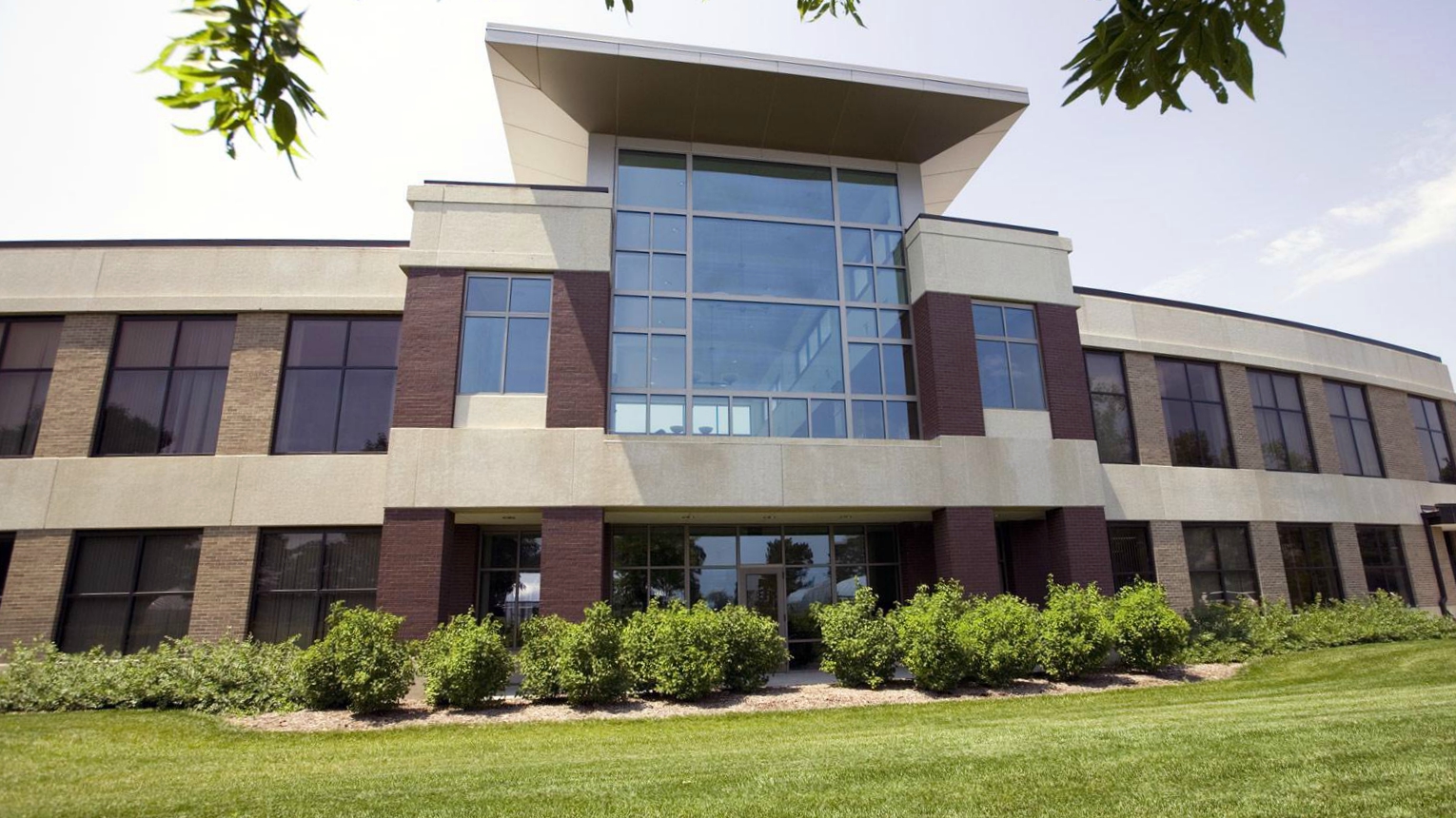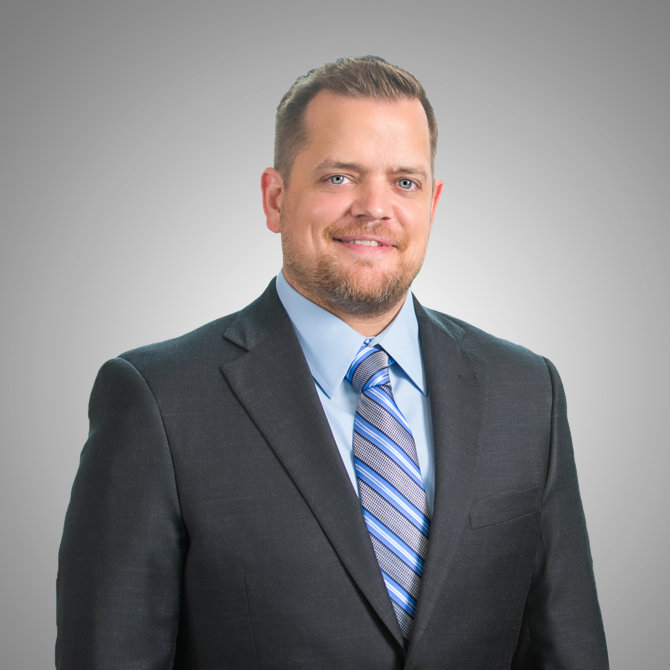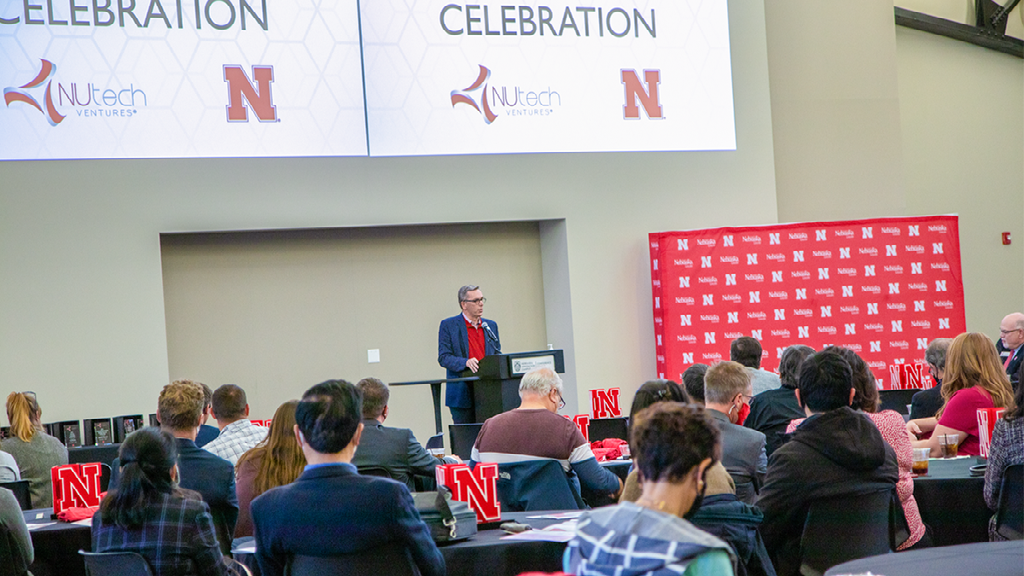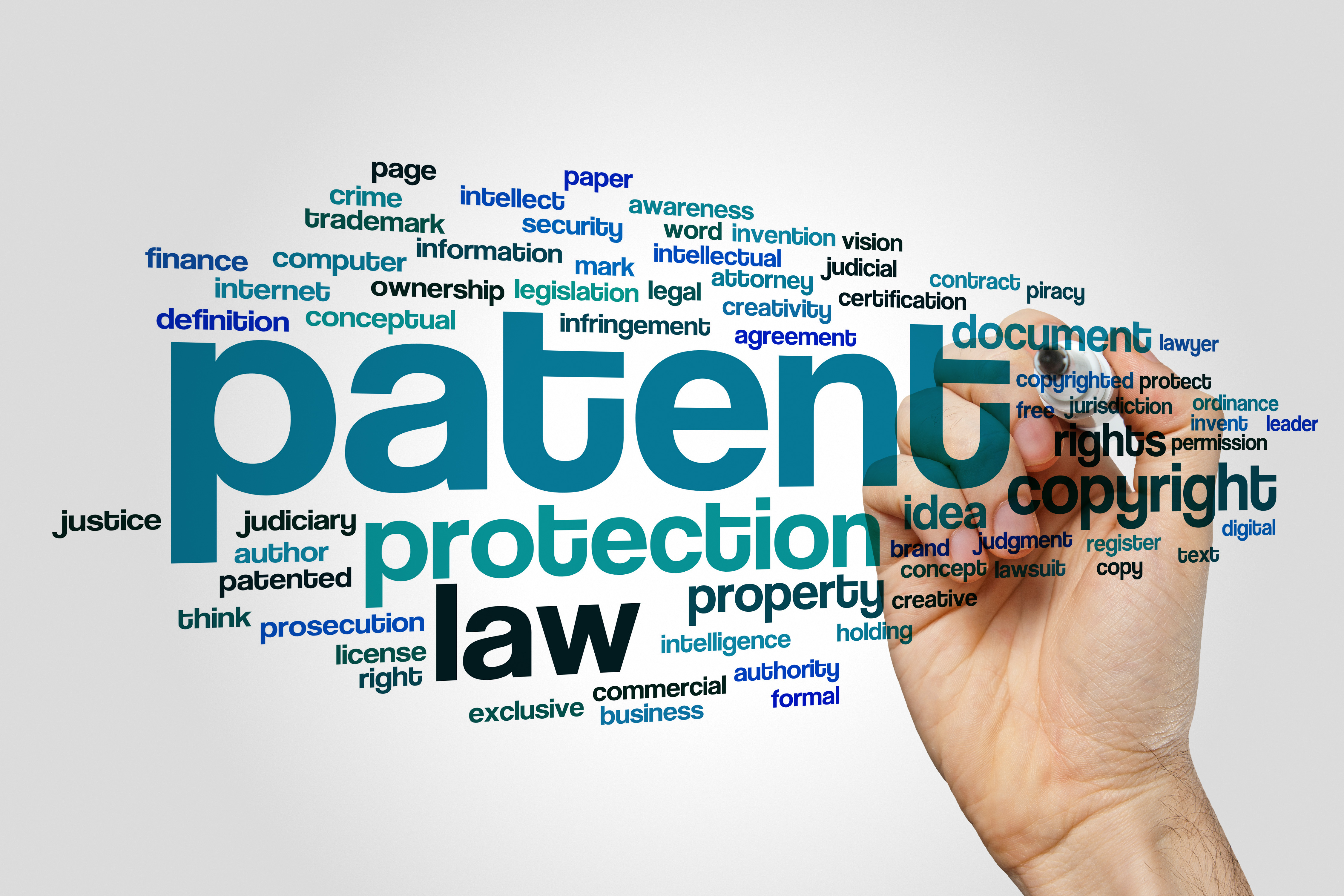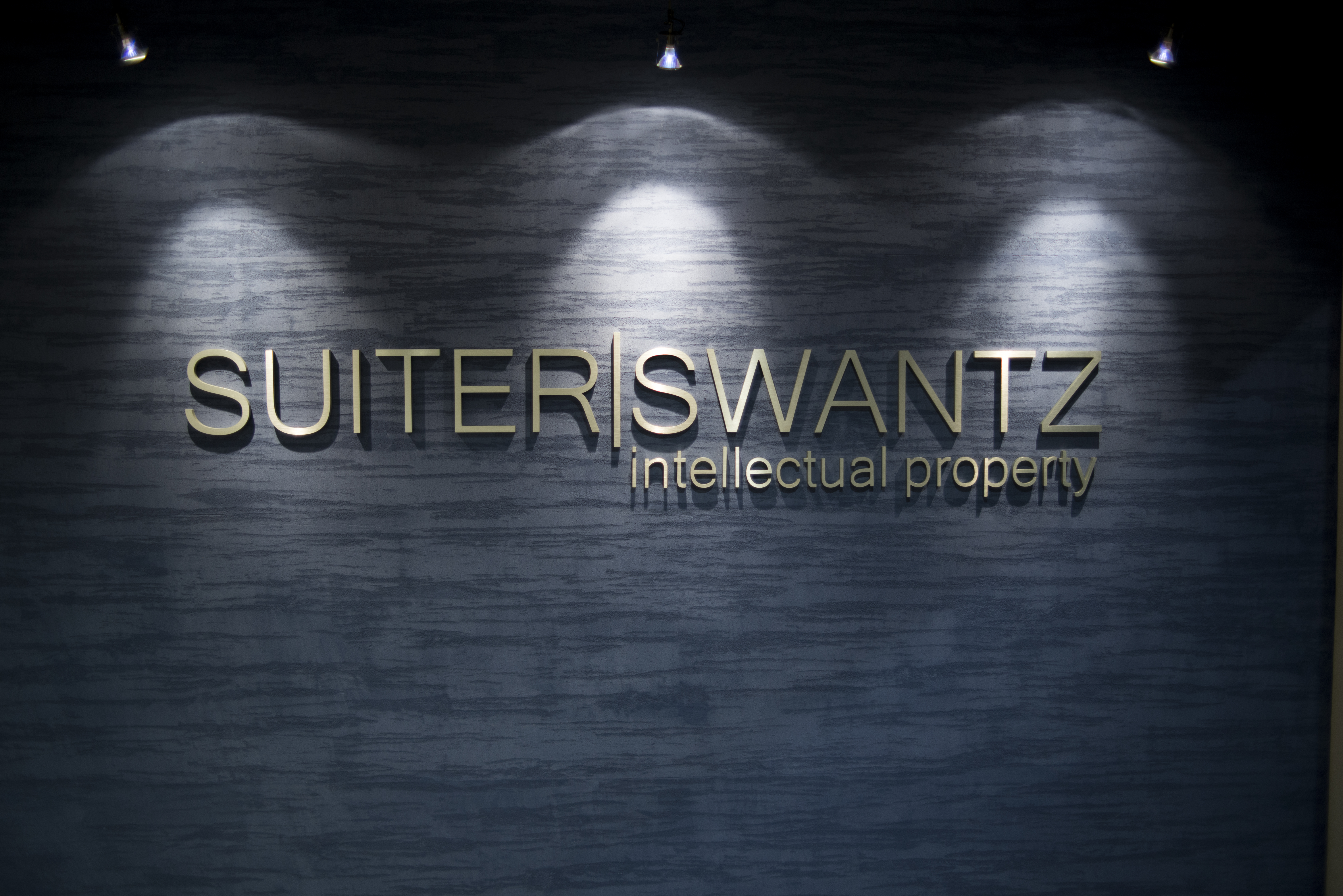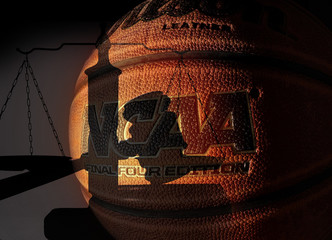Shane Thielen Teaching Copyrights Course at Creighton University School of Law
Suiter Swantz IP Patent Attorney, Shane Thielen, is teaching Copyrights at Creighton University School of Law during the 2022 spring semester.
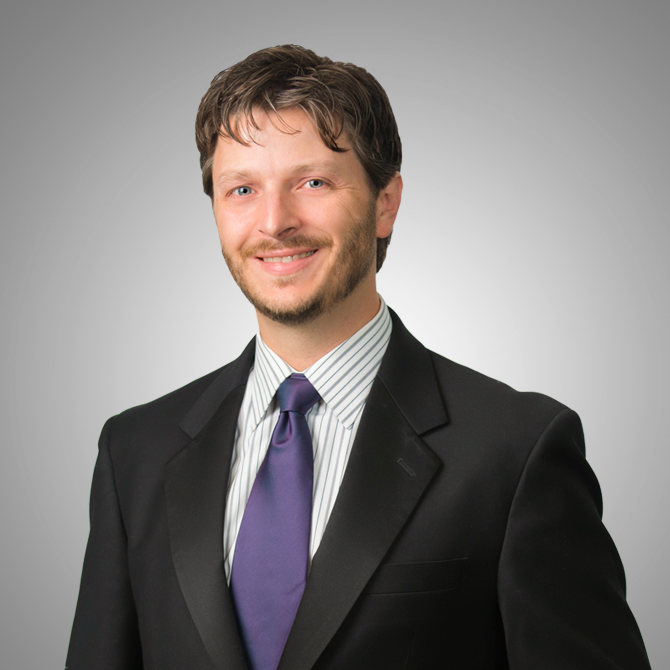 Shane's course focuses primarily on the Copyright Act of 1976 and considers the types of works protected, the requirements for protection, and the scope of protection. The course also focuses on copyright issues created by recent and emerging technologies in the computer and electronic commerce areas.
Shane's course focuses primarily on the Copyright Act of 1976 and considers the types of works protected, the requirements for protection, and the scope of protection. The course also focuses on copyright issues created by recent and emerging technologies in the computer and electronic commerce areas.
Shane holds a B.S. in Computer and Systems Engineering from Rensselaer Polytechnic Institute. He received a Juris Doctor, with honors, from Creighton University School of Law.
Shane is admitted to the U.S. District Court, District of Nebraska; admitted to the Nebraska Supreme Court; and is registered to practice before the United States Patent and Trademark Office.
Suiter Swantz IP is a full-service intellectual property law firm providing client-centric patent, trademark, and copyright services. If you need assistance with an intellectual property matter and would like to speak with one of our attorneys, please contact us at info@suiter.com.
Inventions Made by Kids
Kids can be incredibly creative and inventive – and some even see their extensive ideas develop into amazing business opportunities as well.
These children turned their frustrations, mistakes and brilliance into commercial successes, businesses, and even life-long careers. Their stories are sure to inspire anyone going into the business world, where creativity and imagination are often a bonus, if not necessary.
Abbey Fleck (Age 8) – Makin’ Bacon
Young entrepreneur Abbey Fleck was only eight years old when inspiration struck. She and her dad had just finished cooking bacon, only to discover that there weren’t any paper towels to soak up the fat. Much to Fleck’s mother’s dismay, the pair improvised and used the classified section of a newspaper instead. Suddenly, Fleck had an idea: “Why not hang the bacon up while it cooks?” Not only would this render paper towels unnecessary, but it would also make the bacon healthier.
In 1993, after Fleck and her dad had spent some time experimenting, the duo brought forth a microwave-safe dish with three upright bars on which to hang bacon on while it cooked. They patented their idea a year later and eventually struck a distribution deal with Walmart. Fleck’s grandfather took out a loan on his farm to pay for the first 100,000 dishes – but it seems to have been worth it. In 2002, Entrepreneur.com reported that the new company was earning more than $1 million in royalties annually, and Makin’ Bacon dishes are still sold at Walmart as well as Target.
George Nissen (Age 16) – Trampoline
In 1930, at age 16, George Nissen came up with an idea that would revolutionize acrobatics: the trampoline. After seeing trapeze artists finish their routines by dropping into a safety net below, Nissen thought it would be even more exciting if they could somehow keep bouncing around – so he turned his parents’ garage into a workshop and got cracking. His invention consisted of a metal frame with canvas stretched over it, which he christened the “bouncing rig.”
While studying a business degree at the University of Iowa, Nissen continued to perfect his contraption, replacing the canvas with nylon to increase the bounce. He changed the name to “trampoline”, adding an “e” to the Spanish word for “diving board”, and registered it as a trademark. “There was no market for it because nobody has ever seen one,” said Nissen. “I had to demonstrate its worth. And that was always my forte. I like to make new things and then market them.” The late inventor spent his life traveling the world doing trampoline demonstrations and promoting both his invention and the sport. At the age of 92, he could still do a headstand.
Frank Epperson (Age 11) – Popsicle
On a winter’s night in 1905, the temperature in San Francisco had fallen to a record low, by chance freezing a concoction that 11-year-old Frank Epperson had left out on the porch. As the story goes, Epperson mixed soda water powder and water in a glass and then left the stirring stick in the mixture. After a night out in the cold, the mixture had frozen solid – and the accidental inventor had created the world’s first Popsicle.
Epperson didn’t do anything more with his invention until 1922, when he gave out the treat at a fireman’s ball. Everyone loved it so much that he patented his idea under the name “Eppsicle.” However, he changed the name after his children started calling the treat a “Popsicle.” Epperson sold on the rights to the Popsicle brand name to New York’s Joe Lowe Company in 1925. Three years later, Popsicle sales had topped 60 million, bringing Epperson royalties on each sale.
Chester Greenwood (Age 15) – Earmuffs
While he was 15 years old, Chester Greenwood’s ears got painfully cold one day when he was ice skating in his hometown of Farmington, Maine. Although he tried wrapping a scarf around his head, it simply didn’t do the trick – so he set out to find a better solution to the problem. Greenwood made a wire frame and asked his grandmother to sew beaver skin pads to it, creating the world’s first earmuffs.
In 1877, at age 19, Greenwood patented his invention. He went on to perfect and manufacture the ear protectors in a local Farmington factory, eventually selling his earmuffs to soldiers during the First World War. By the time he died in 1937, he had made a veritable fortune, selling as many as 400,000 pairs in a single year. What’s more, earmuffs weren’t Greenwood’s only invention; in fact, he took out more than 100 patents in his life.
Robert Patch (Age 6) - Toy trucks
One of the very youngest inventors was Robert Patch, who was granted the patent for the toy truck when he was just six years old, back in 1963. He built his prototype out of bottle caps and cardboard, and his invention was meant to be taken apart and refashioned into different types of trucks, like a very early Transformer.
Suiter Swantz IP is a full-service intellectual property law firm providing client-centric patent, trademark, and copyrightservices. If you need assistance with an intellectual property matter and would like to speak with one of our attorneys, please contact us atinfo@suiter.com.
Foreign Filing Requirements in Significant Markets
 Jeff Bernard Jeffrey Bernard is a patent attorney with Suiter Swantz IP. Jeff graduated with honors from Virginia Tech, receiving his B.S. in Biology with a minor in Chemistry. Jeff received his Juris Doctor from Albany Law School.
Jeff Bernard Jeffrey Bernard is a patent attorney with Suiter Swantz IP. Jeff graduated with honors from Virginia Tech, receiving his B.S. in Biology with a minor in Chemistry. Jeff received his Juris Doctor from Albany Law School.
In patent law, the Paris Convention provides a right of priority for utility inventions and industrial designs. Under the Convention, a valid first filing in one member country establishes an effective filing date for later filings in other member countries.
Thus, assuming timely filing and a proper priority claim (12 months for utility inventions and 6 months for industrial designs), later filings are treated as if they had been filed on the same day as the first filing.
Some member countries have restrictions on where the first filing can occur, and those that do tend to be commercially significant markets in terms of R&D, manufacturing and commercial activity. Therefore, it is important to comply with these requirements to prevent loss of patent rights, and in some cases, even harsher penalties.
First filing requirements are based on different factors, such as where the inventive activity occurred, the subject matter of the invention, and the inventorship. Inventive activity concerns the country of origin of the technical solution determined by the patent application claims. In other words, where the claimed invention was developed, in whole or part. Subject matter restrictions, which are similar across the member countries, are in place to provide protection for sensitive technical information such as state secrets, military technology, national security and atomic energy. Inventorship concerns the residency and citizenship of the inventors.
The permission that must be sought to file a domestic invention abroad is referred to as a Foreign Filing License (FFL). Assuming a domestic invention is first filed domestically, the issuance of a foreign filing license occurs automatically and well in advance of the priority deadline, and typically in a matter of weeks. In most cases, the FFL is granted or acquiesced to unless the invention is directed to sensitive technical information as discussed above.
While most Convention members have foreign filing requirements to a degree, some have strict requirements and severe consequences for failure to comply. The requirements of a few of the more significant markets are discussed below.
China is generally considered to have the strictest FFL requirements. According to Article 20, no patent right shall be granted in China for an invention developed in China and filed abroad without permission. In other words, failure to obtain advance approval to foreign file for domestic inventions, regardless of residency and citizenship, will result in loss of patent rights in China. In addition, should the subject matter relate to security or other vital state interests, criminal penalties and fines may result for the Applicant. Permission is obtained by filing a Request for Confidentiality Examination, either with or without a domestic filing. With a domestic filing, the Request is automatic, and the foreign application can typically be filed within a month, and in some cases a matter of days, assuming the application does not need to be kept confidential. Without a domestic filing, the Request must include a description of the technical solution in the Chinese language. As a practical matter, the description should be identical to the contents of the patent application intended to be first filed foreign. While the timing for approval can take up to 6 months, typical approval time is in the range of 1-2 months. In the absence of approval within 6 months, the Applicant can assume permission has been granted and can file abroad without consequences.
India FFL requirements are based on residency of the inventor OR Applicant. According to Section 39 of the India Patents Act, an FFL is required before fling outside of India when any named inventor/Applicant is a resident in India. When a domestic application is the first filing, assuming no confidentiality protection has been invoked, a foreign filing can be made after 6 weeks. Section 39 does not apply to persons not residing in India but does apply when even one of the inventors/Applicants is an Indian resident. Residency is determined according to the Indian Tax Code, which provides some room for interpretation. Failure to comply with the FFL requirements may result in the Indian patent application being rejected entirely.
United States also bases foreign filing requirements on domestic inventive activity but provides forgiveness for failure to comply, in some cases. Assuming the invention is not ordered to be kept secret for the reasons discussed above, obtaining an FFL requires a petition under 37 CFR § 5.13 along with the requisite petition fee and a copy of the material upon which the license is desired. The request can be expedited. In the event the application if first filed foreign without an FFL, the FFL can be applied for and granted retroactively if the first foreign filing was by error and without deceptive intent.
Considering failure to comply with the FFL requirements can have severe consequences in some member countries, it is important before first filing to determine (1) where the inventive activity occurred (2) the contributions of the inventors to the claims, and (3) the inventor information. In some situations, inventive activity may have occurred in more than one country, and an application may name inventors from more than one country, and in some cases both. In these situations, it should be determined where best to obtain a license and where best to file first to prevent loss of rights.
Suiter Swantz IP is a full-service intellectual property law firm providing client-centric patent, trademark, and copyright services. If you need assistance with an intellectual property matter and would like to speak with one of our attorneys, please contact us at info@suiter.com.
Matt Poulsen Teaching Patent Law Course at University of Nebraska College of Law
Suiter Swantz IP Co-Owner and Patent Attorney Matt Poulsen is teaching Patent Practice and Innovation Management at the University of Nebraska College of Law this spring.
The course focuses on the lifecycle of patent-protected innovation and helps give students an understanding of the nature of patents, how patents are obtained, and the strategic use of patents.
Matt Poulsen is a patent attorney and co-owner of Suiter Swantz IP. Matt obtained his Ph.D., M.S. and B.S. in physics from the University of Nebraska and his Juris Doctor from the University of Nebraska College of Law, graduating with distinction.
Matt represents clients from Fortune 500 companies, universities, startup companies, and individual inventors. His practice is generally focused on IP procurement and protection as well as U. S. and foreign patent preparation and various trademark, copyright, and trade secret matters. Matt also advises clients with respect to various startup related activities, such as early-stage IP strategy.
Suiter Swantz IP is a full-service intellectual property law firm providing client-centric patent, trademark, and copyright services. If you need assistance with an intellectual property matter and would like to speak with one of our attorneys, please contact us at info@suiter.com.
Best Time of Year for Holiday Patent Cheer!
Season’s Greetings and Holiday Inventions
It’s the time of year to celebrate — so let’s celebrate innovation! Many inventors have done their best to make the holidays bright, and here are a few items we found.
https://youtu.be/QSsJXXZlb3Y
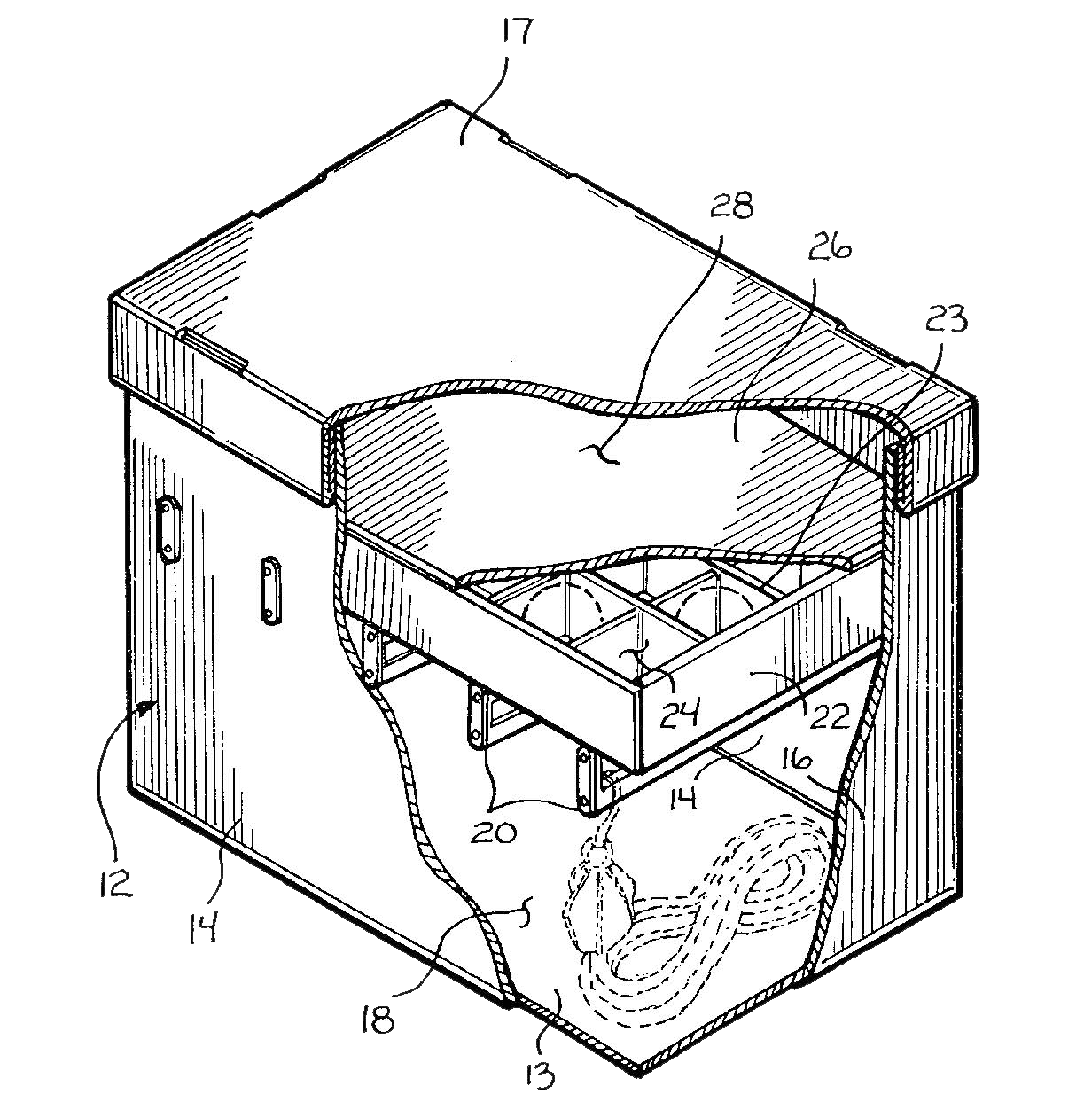
Christmas Tree Decoration Organizer
When the presents are unwrapped and friends and family have returned to their own homes, it’s a little bittersweet. Many of us are ready to pack up Christmas décor get back to our regular routine. This Christmas tree decoration organizer box helps to store them safely, so unpacking next year is easy. It was patented in 2006 by Jennifer Houtler.
Rotatable Christmas Tree Stand
A rotating Christmas tree stand can add a nice effect to a charmingly decorated Christmas tree. It c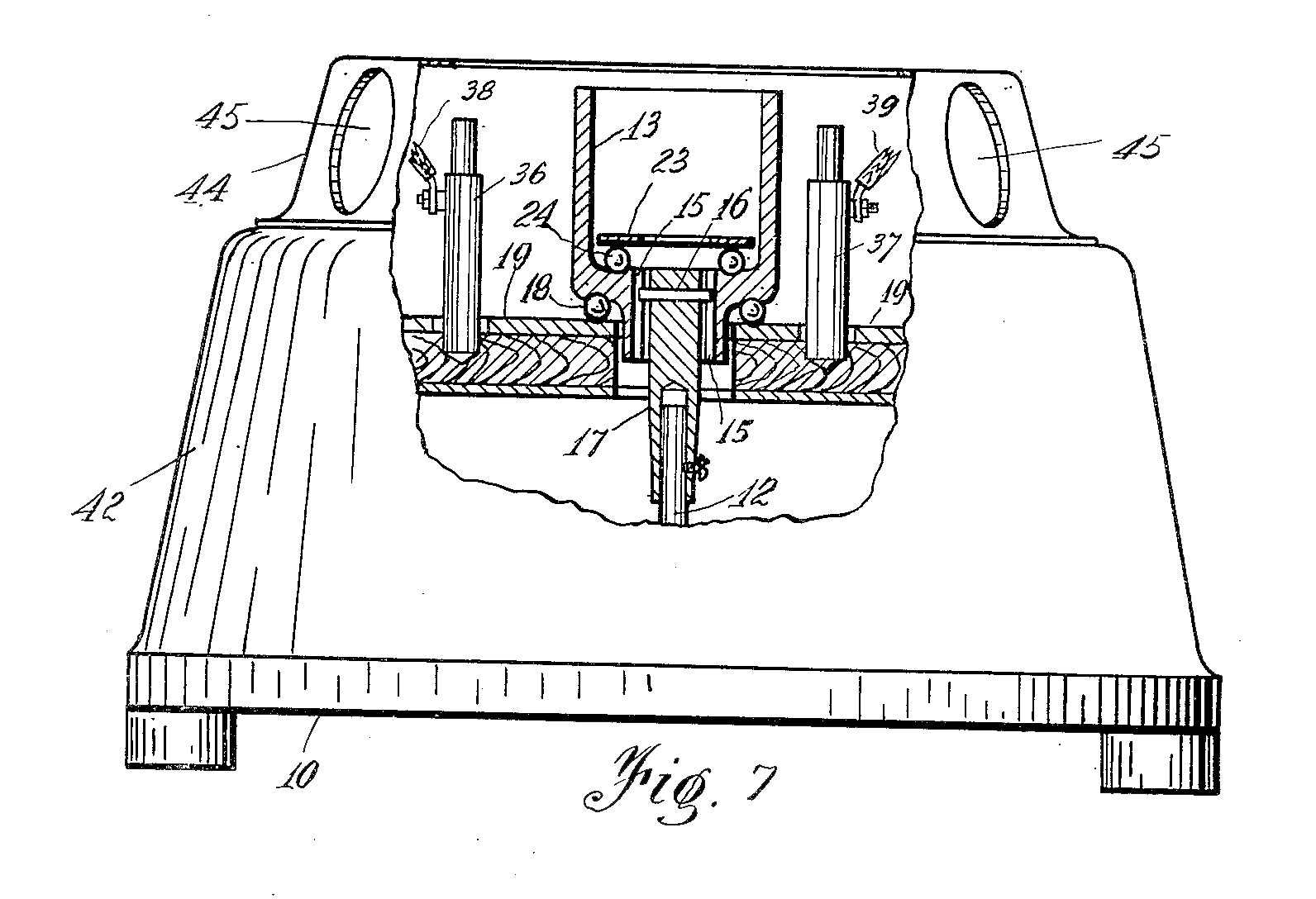 an effortlessly highlight all your memorable ornaments. It’s fun to choose additional features for the revolving Christmas tree stand, such as music-playing capacity, remote control, and electrical holders for tree lights. This pictured rotatable Christmas tree stand was patented in 1949 by Claris Tacy.
an effortlessly highlight all your memorable ornaments. It’s fun to choose additional features for the revolving Christmas tree stand, such as music-playing capacity, remote control, and electrical holders for tree lights. This pictured rotatable Christmas tree stand was patented in 1949 by Claris Tacy.
Wand Activated Electronic Menorah
One of the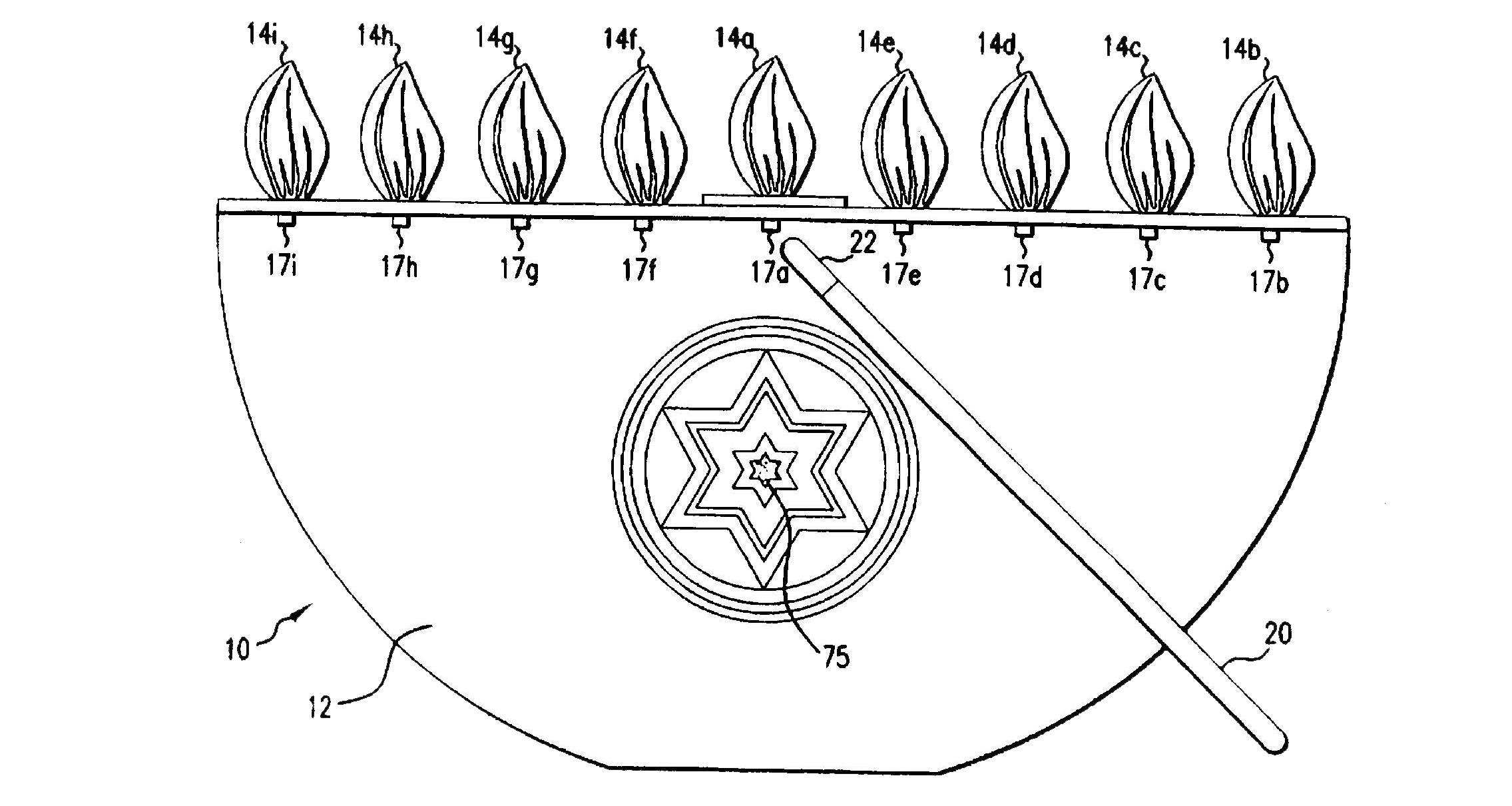 most iconic symbols of Hanukkah is the menorah. First referenced in the biblical book of Exodus, the menorah in its original form was crafted according to a design revealed to Moses by God on Mount Sinai.
most iconic symbols of Hanukkah is the menorah. First referenced in the biblical book of Exodus, the menorah in its original form was crafted according to a design revealed to Moses by God on Mount Sinai.
In the homes of people celebrating Hanukkah today, candles are inserted from right to left but are lit from left to right, and the candlelight serves as a reminder of the miraculous story.
Real candles may present a fire hazard, particularly if left unattended or if young children are present. This wand activated electronic menorah, patented by Victor Horowitz in 2000, describes a menorah providing support for a plurality of artificial candles with LEDs providing artificial candle flames.
Santa’s Sleigh
While sleds are the most popular means of transport for Santa Claus in the world, some countries are exceptions. According to Dutch tradition, Santa Claus leaves Spain to arrive in the Netherlan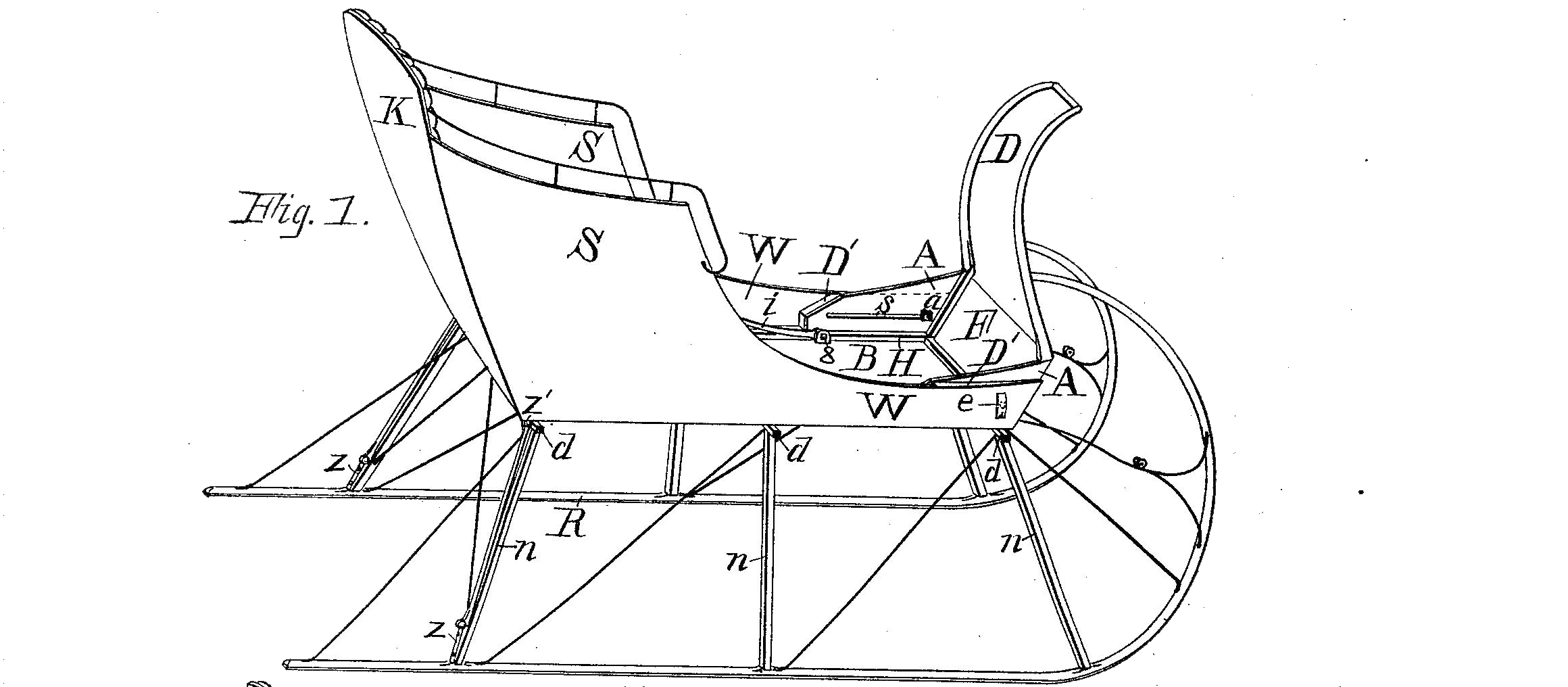 ds in a boat loaded with presents. In Luxembourg, he is always accompanied by Father
ds in a boat loaded with presents. In Luxembourg, he is always accompanied by Father
Fouettard and travels by helicopter or train, and sometimes on the back of a donkey. Other countries have preferred to adapt Santa’s representation to their own culture or climate. This is the case of Australia, where it is said that Santa Claus arrives on a surfboard.
This pictured sleigh was patented by W.D. Rumsey in 1889.
Christmas Stocking Hanger
It's easy to see why Christmas stockings are a favorite tradition for so many people. Stuffing them to the brim with carefully chosen gifts and seeing the joy on family members' faces as they empty the stockings on Christmas morning, it's joyful from start t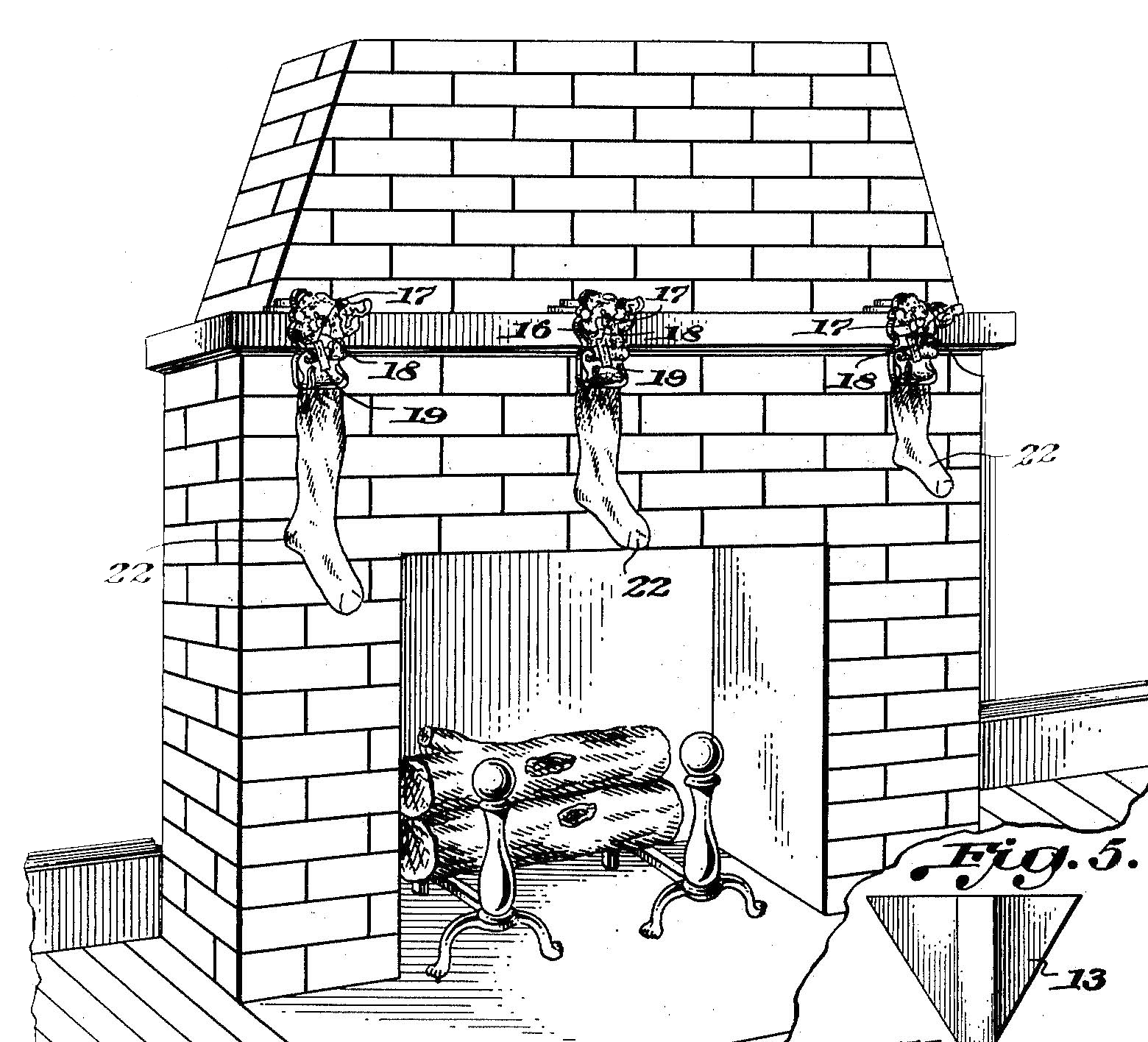 o finish! Several people hang their stockings on display from the mantel. Rather than using a nail that causes holes in the woodwork, this temporary hanger can be easily removed each year.
o finish! Several people hang their stockings on display from the mantel. Rather than using a nail that causes holes in the woodwork, this temporary hanger can be easily removed each year.
This pictured Christmas stocking hanger was patented in 1945 by Fred U. Wolfe.
Christmas Lights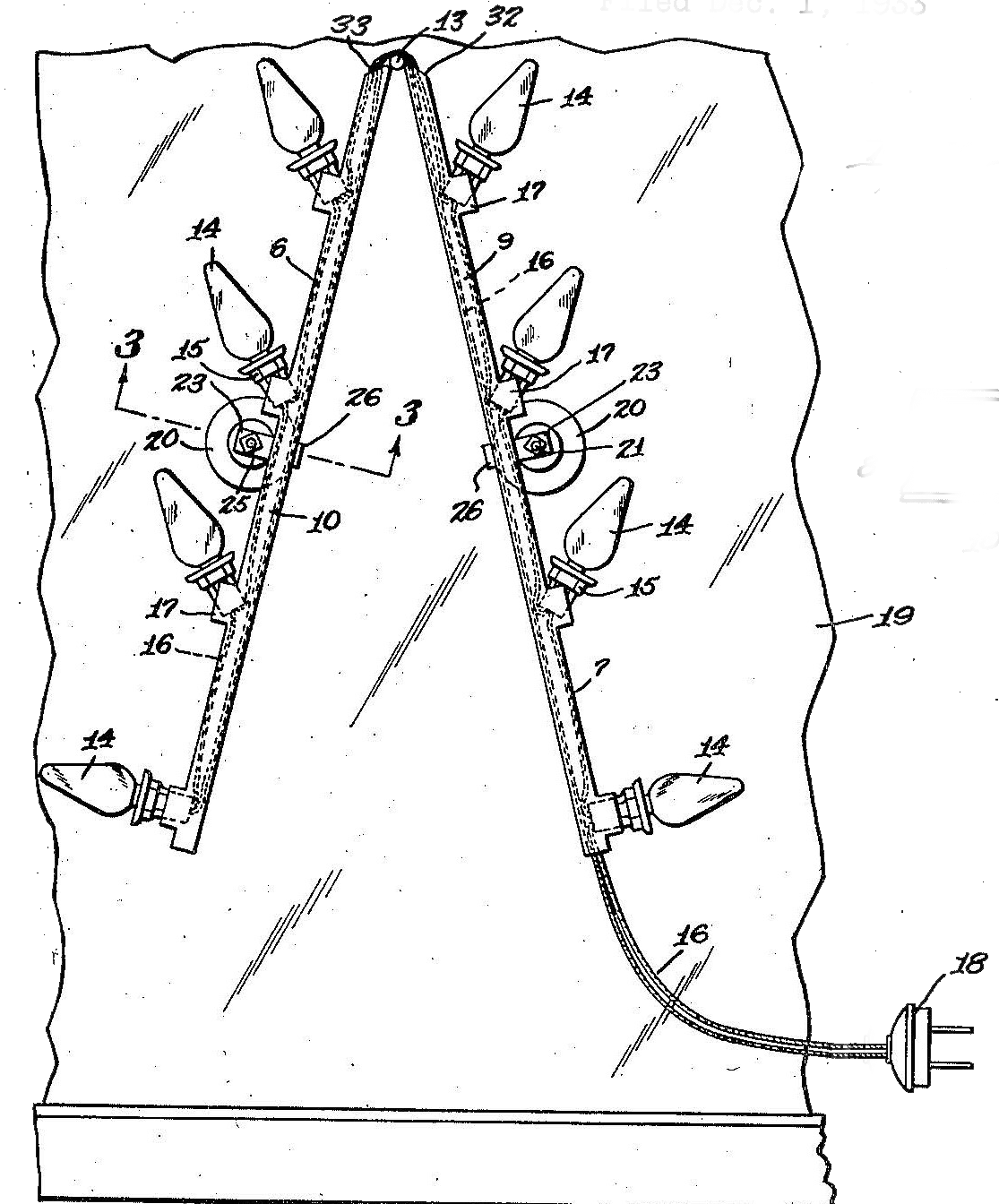
From icicles to bubble lights, twinkling holiday lights have a long and colorful history. The person who sparked the tradition of holiday lights is believed to be Martin Luther, the 16th century protestant reformer and priest. It is said he became so entranced by stars shining through an evergreen forest that he brought a tree into his home and tied candles onto its branches for his family's enjoyment.
This pictured patent of Christmas lights was created by Adolph Simeone in 1933.
Suiter Swantz IP is a full-service intellectual property law firm providing client-centric patent, trademark, and copyrightservices. If you need assistance with an intellectual property matter and would like to speak with one of our attorneys, please contact us atinfo@suiter.com.
Thanksgiving...a Time to be Thankful for Innovation
Thanksgiving is right around the corner, and soon millions of people across the United States will be gathering with family, friends, and other loved ones to share a meal and make new memories. Check out these inventions that have impacted Thanksgiving dinner and read about how they were invented.
Meat Thermometer
No one wants to dig into an overcooked turkey or serve guests undercooked meat. Using a meat thermometer is the only foolproof way to check a meat's doneness. In 1939, George E. Ford filed a patent for a meat thermometer and described it as a “to use in roasting meats to indicate when the roast is done: bi-metallic thermometer with a spacing chamber between its dial housing and the thermometer tube to facilitate the handling when inserting or withdrawing the thermometer from the meat.” The meat thermometer has been helping us cook delicious turkeys and roasts ever since!

Corkscrew
The corkscrew, like so many other inventions, was born out of necessity. Consumers have struggled to easily remove corks for as long as wine has been sold in glass bottles with these corks. The English quickly invented the corkscrew specifically for wine opening. Early corkscrews were usually T-shaped devices that pulled the cork. In the 1930s, the double-winged-lever corkscrew was patented, and it is still commonly used today. Since then, there have been many more innovations including, portable electric corkscrews and reusable plastic corks.

Can Opener
Thankfully, Ezra J. Warner in vented the first can opener in 1958 because for 50 years after cans went into production, people were opening them with a chisel and a hammer. Warner’s can opener design was a blade that cut into the can lid with a guard to prevent it from puncturing the can. This first can opener left a very jagged edge, and this design was never a big hit with the public, even though it was widely used by the U.S. Army in the Civil War. Today, many people have electric can openers, but some choose to stick to the more utilitarian hand-crank designs.

Deep Fryer
Deep fried turkeys are delicious, but they can also be dangerous if not done properly. Despite many warnings, some people still insist on putting frozen or partially thawed turkeys into deep fryers, which can cause them to explode! In 1998, Rodney Barbour, patented a poultry frying apparatus which allows a whole turkey to be deep-fried in oil while minimizing the danger presented by exposure to hot oil. Deep fried turkeys, although delicious, are responsible each year for at least one person’s burning down their home from not properly handling the frying pot and burner. Be careful!

Turkey baster
It seems as if the basic idea of the turkey baster has been around for so long that there is little information available about its invention. Historians believe that the turkey baster pre-dates Thanksgiving and has been used in various cultures for hundreds, if not thousands, of years. Who knew?!

The yearly Thanksgiving feast would not be like it is today without various food preparation inventions that make our lives a little easier. When you’re pondering what you’re thankful for this year, be sure to mention inventors!
Suiter Swantz IP is a full-service intellectual property law firm providing client-centric patent, trademark, and copyright services. If you need assistance with an intellectual property matter and would like to speak with one of our attorneys, please contact us at info@suiter.com.
Suiter Swantz Co-Owners Attend NUtech Ventures 2021 Innovator Celebration
The annual event featured this year’s Innovator Awards, which recognize university personnel and companies who are developing and commercializing cutting-edge research.
Congratulations to all of the innovators at University of Nebraska-Lincoln who received or were nominated for an award at the NUtech Ventures 2021 Innovator Celebration!
- Ron Faller, University of Nebraska- Department of Civil & Environmental Engineering
- Midwest Roadside Safety Facility & TrafFix Devices, Inc.
- Eric Markvicka, UNL Mechanical & Materials Engineering
- Megan Hopkins, Nebraska College of Education and Human Sciences
- TurfGrade, Nebraska Agronomy and Horticulture
- Jackson Stansell, University of Nebraska-Lincoln Biological Systems Engineering Department
Co-owners, Matt Poulsen and Scot Ringenberg, along with patent attorney, Jason Glanzer were in attendance and enjoyed meeting with the various stakeholders. As a community sponsor of the event, we look forward to fostering these connections and continuing to support innovation in Nebraska!
Suiter Swantz IP is a full-service intellectual property law firm providing client-centric patent, trademark, and copyright services. If you need assistance with an intellectual property matter and would like to speak with one of our attorneys, please contact us at info@suiter.com.
Sean Suiter Teaching Patent Law Course at Creighton University School of Law
Suiter Swantz IP Co-Owner and Patent Attorney, Sean Patrick Suiter, is teaching Patent Law at Creighton University School of Law during the 2021 fall semester.
 His course focuses on the fundamental principals of patent law and is designed for students interested in the intellectual property law. Since 1998, Sean has taught a variety of patent and copyright law courses through Creighton University.
His course focuses on the fundamental principals of patent law and is designed for students interested in the intellectual property law. Since 1998, Sean has taught a variety of patent and copyright law courses through Creighton University.
Sean holds undergraduate degrees in English Literature, Chemistry, and Physics from Creighton University and the University of Nebraska, respectively. Sean received his Juris Doctor from Creighton University Law School. Additionally, he is a member of Delta Sigma Rho and Tau Kappa Alpha.
Sean is admitted to the U.S. District Court, District of Nebraska (1990); U.S. Court of Appeals, for the Federal and Eighth Circuits, U.S. Court of International Trade, U.S. Court of Federal Claims, U.S. Supreme Court (1991); and is registered to practice before the United States Patent and Trademark Office.
Suiter Swantz IP is a full-service intellectual property law firm providing client-centric patent, trademark, and copyright services. If you need assistance with an intellectual property matter and would like to speak with one of our attorneys, please contact us at info@suiter.com.
Ian Sannes will be an Associate Patent Attorney at Suiter Swantz.
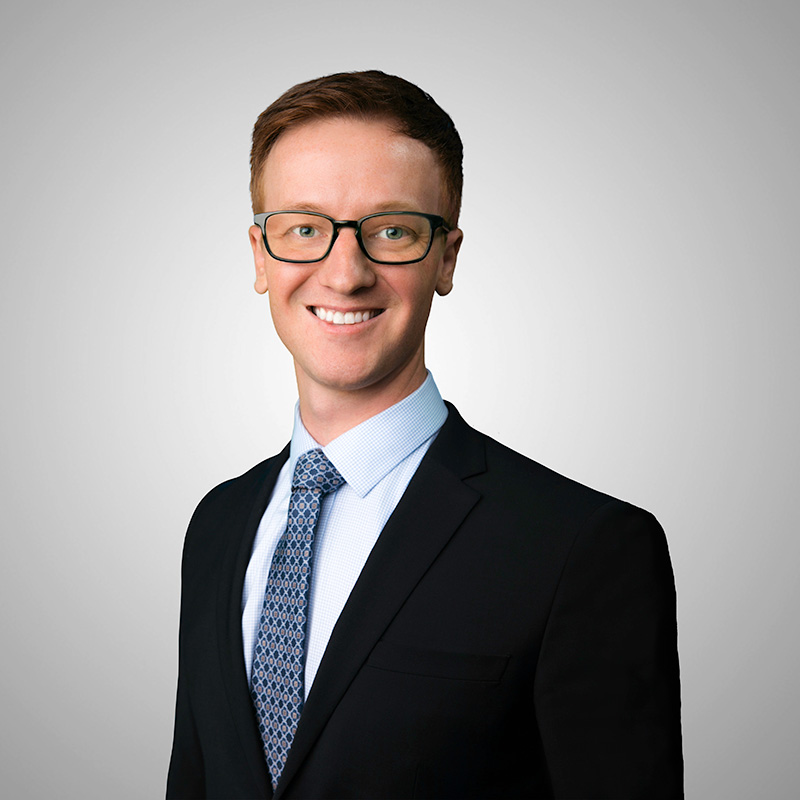
Ian Sannes joins Suiter Swantz.
We are pleased to announce Ian Sannes has joined our growing team!
Suiter Swantz IP is a full-service intellectual property law firm providing client-centric patent, trademark, and copyright services. If you need assistance with an intellectual property matter and would like to speak with one of our attorneys, please contact us at info@suiter.com.
Suiter Swantz IP Welcomes Marketing Coordinator Sara Goodenberger
Sara Goodenberger joins Suiter Swantz IP as Marketing Coordinator.
Sara  joined the firm in 2021 and has a B.S. in Management from Bellevue University.
joined the firm in 2021 and has a B.S. in Management from Bellevue University.
Sara has experience in nonprofit marketing, public relations, graphic design and content development. Outside of work, Sara runs a small apparel business, enjoys traveling and spending time with her family.
Suiter Swantz IP is a full-service intellectual property law firm providing client-centric patent, trademark, and copyright services. If you need assistance with an intellectual property matter and would like to speak with one of our attorneys, please contact us at info@suiter.com.
Calling an Audible on the NCAA’s Name, Image, and Likeness Policy
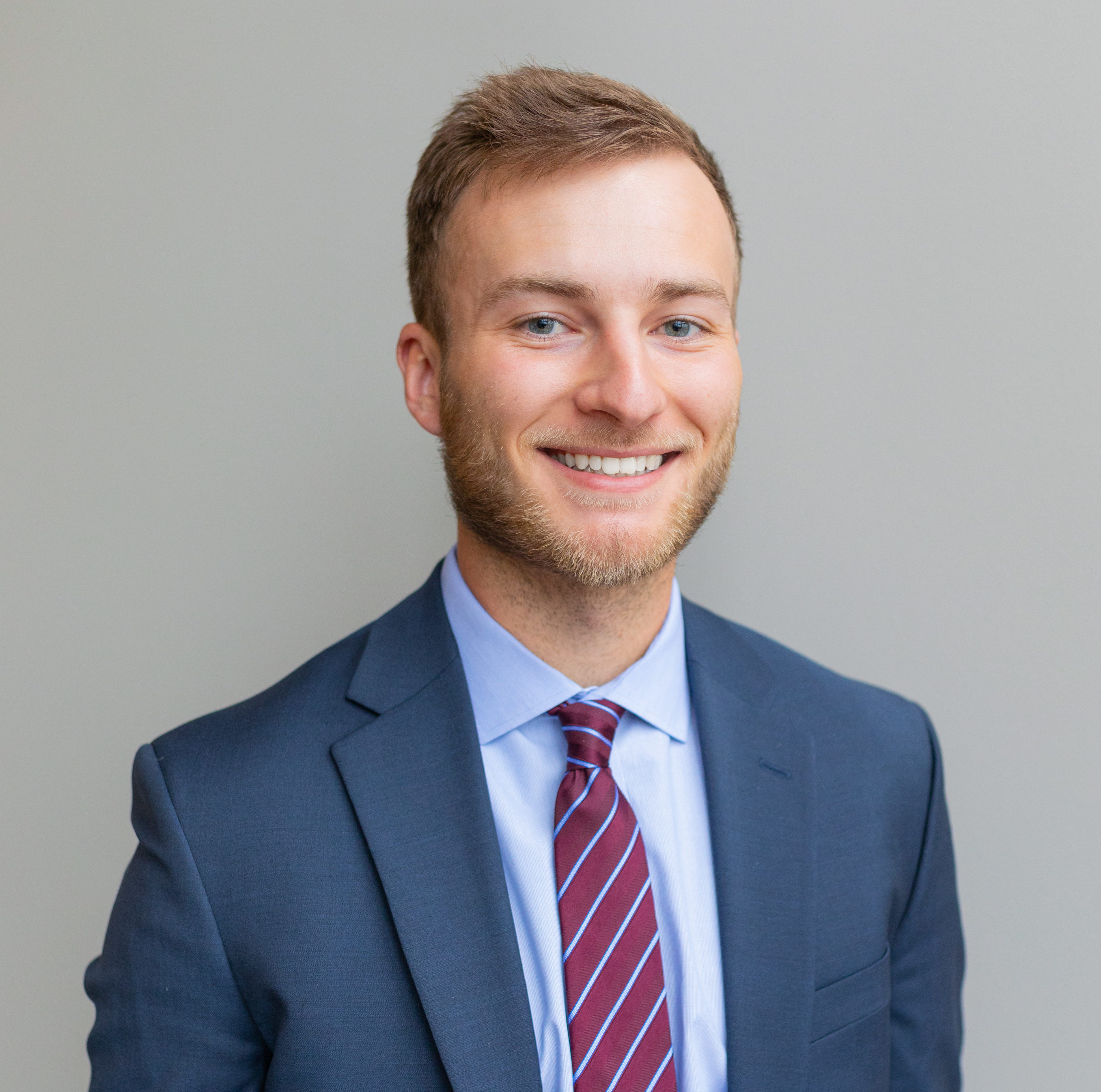 Jonah Clark is a technical advisor and law clerk at Suiter Swantz IP. Jonah received his B.S. in Industrial Engineering and minor in Business from Iowa State University.
Jonah Clark is a technical advisor and law clerk at Suiter Swantz IP. Jonah received his B.S. in Industrial Engineering and minor in Business from Iowa State University.
The NCAA has always believed that college athletes should maintain an amateur status, and this core principle has barred students who compete in the NCAA’s multibillion-dollar industry from profiting off of their name, image and likeness (NIL).
However, after years of discussion and debate, on June 30, 2021, governing bodies in all three divisions of the NCAA adopted a uniform interim policy suspending name, image, and likeness (NIL) rules for all incoming and current college athletes. This policy guarantees that student-athletes may pursue financial opportunities relating to the commercial use of their name, image and likeness without the risk of losing their collegiate careers and scholarship eligibility.
Under past NCAA rules, college athletes could not endorse products or services, even if unpaid, and they could not receive payments through similar opportunities capitalizing on their fame. The new interim policy provides guidance to college athletes, recruits, families, and schools on what they are now allowed to participate in. Individuals may now profit off of their name through avenues such as social media posts, appearances, sponsorships, autograph sales, endorsement deals and private training classes or camps. Athletes may also be paid by local or national businesses in exchange for their promotion. While opening the door to name, image and likeness opportunities to student-athletes, the NCAA is committed to retain its policy on avoiding pay-for-play and improper inducements tied to choosing a particular school. Pay-for-play occurs when athletes receive compensation from the school in exchange for participating in their sport. College athletic departments have expressed concerns with boosters attempting to lure recruits to campus with payments through endorsement deals. More clarity regarding the rules will need to be expounded upon in the future. Right now, the NCAA’s proposed NIL framework allows recruits to enter NIL agreements as long as they disclose the details before signing with a school.
The amount of money from NIL activities may not put the vast majority of college athletes on a track to become millionaires. However, research from Thilo Kunkel (Tempel University), Bradley Baker (University of Massachusetts), Thomas Baker III (University of Georgia) and Jason Doyle (Griffith University) examined athletes’ social media accounts and found that college athletes’ NIL value varies but “the NCAA’s position that student-athletes lack meaningful NIL value is false.” The study found that the Instagram account of former Clemson football quarterback Trevor Lawrence, the No. 1 overall pick in this year’s NFL draft, had a value of $331,272. Blake Lawrence, the CEO and co-founder of Opendorse, told Yahoo Sports last year that Trevor Lawrence could make an estimated $16,000 per Instagram post and $1,100 per Twitter post. Ultimately, an athletes’ NIL value will depend on the extent of his or her popularity and the size of the market in which they live.
The question that has yet to be answered is whether a permanent change will come in the form of patchwork legislation by the states or uniform federal legislation. It is desirable to avoid a state law patchwork which would create an uneven playing field when it comes to recruiting athletes. Therefore, the NCAA has urged Congress to pass federal legislation to provide some uniformity and clarity across the nation with various bill proposals. This year there have been five bills stalled as the NCAA seeks a federal legal standard on NIL activity for athletes. A large part of the reason these bills are being stalled is due to the fact that the NCAA is also seeking protection from continued antitrust challenges in these same proposals. With no nationwide standard, lawmakers remain divided on what the legislation should look like. In a hearing before the Senate Committee on Commerce, Science and Transportation, there was a split between favoring more urgent legislation versus more of a sweeping bill that would also protect athletes’ rights. These additional rights that lawmakers want protected include health care and safety standards for athletes.
Institutions will need to quickly determine how best to manage the education, enforcement and disclosure pieces following these changes. Since it will likely be a lengthy process before a uniform legal standard is adopted, there will need to be continuous education for athletes, their families and institutions as to what this new landscape means for them and how they can successfully navigate it.
Suiter Swantz IP is a full-service intellectual property law firm providing client-centric patent, trademark, and copyright services. If you need assistance with an intellectual property matter and would like to speak with one of our attorneys, please contact us at info@suiter.com.
Suiter Swantz IP Presents Bikes to Local Elementary School
All Kids Bike made a stop in Omaha, Nebraska to join Suiter Swantz IP and Governor Pete Ricketts to deliver bike programs!
Suiter Swantz IP co-owners, Matt Poulsen and Scot Ringenberg joined Ryan McFarland, CEO of Strider Bikes, Governor Pete Ricketts, and Dr. Cheryl Logan, superintendent of Omaha Public Schools, to present bikes and helmets to Gifford Park Elementary School students in Omaha through the All Kids Bike!
Th e kindergarteners were excited to hop on their new bikes and test them out. Suiter Swantz IP is proud to be a sponsor of the All Kids Bike program, which is a nonprofit corporation on a mission to teach every child in America to ride a bike. The program includes learn-to-ride curriculum, helmets, and Strider balance bikes for the children. Suiter Swantz IP is excited to help!
e kindergarteners were excited to hop on their new bikes and test them out. Suiter Swantz IP is proud to be a sponsor of the All Kids Bike program, which is a nonprofit corporation on a mission to teach every child in America to ride a bike. The program includes learn-to-ride curriculum, helmets, and Strider balance bikes for the children. Suiter Swantz IP is excited to help!










